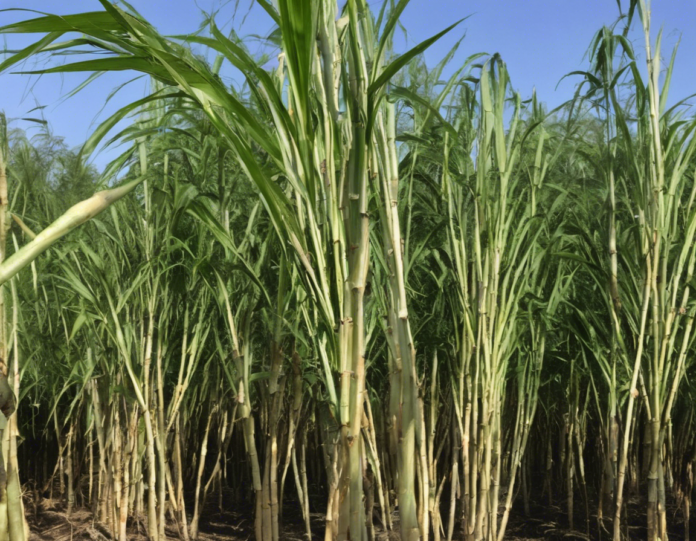Introduction
Sugar cane is a tall, perennial grass that is widely cultivated in tropical and subtropical regions for its sweet sap. It is primarily used for producing sugar, but it has a range of other potential applications that often go unexplored. One of the most promising avenues for maximizing the potential of sugar cane is through strain selection.
Choosing the right sugar cane strain can significantly impact the yield, disease resistance, and overall performance of the crop. In this comprehensive guide, we will delve into the importance of sugar cane strain selection and provide insights into how farmers and researchers can unlock the full potential of this versatile crop.
The Importance of Sugar Cane Strain Selection
1. Yield Potential
One of the primary considerations when selecting a sugar cane strain is its yield potential. Different strains have varying levels of sugar content in their sap, which directly translates to the amount of sugar that can be extracted per hectare. By choosing a high-yielding strain, farmers can maximize their profits and make their operations more economically viable.
2. Disease Resistance
Another critical factor to consider is disease resistance. Some sugar cane strains are more susceptible to common diseases such as rust and smut, which can decimate crops if left unchecked. By choosing a strain with natural resistance to these diseases, farmers can reduce the need for chemical pesticides and ensure a healthier crop.
3. Climate Adaptability
Sugar cane is a tropical crop that thrives in warm, humid conditions. However, not all sugar cane strains are equally adapted to different climates. Some strains perform better in cooler or drier environments, while others are more suited to the hot and humid tropics. By selecting a strain that is well-adapted to their specific climate, farmers can optimize their yield and minimize the risk of crop failure.
4. Processing Efficiency
The processing efficiency of a sugar cane strain is another important consideration. Some strains are easier to mill and extract sugar from, which can save time and money during the processing stage. By choosing a strain that is easy to process, farmers can streamline their operations and increase their overall productivity.
Strategies for Selecting the Right Sugar Cane Strain
1. Research and Consultation
Before selecting a sugar cane strain, it is essential to research the available options and consult with agricultural experts. Universities, research institutions, and agricultural extension services can provide valuable information on the performance of different strains in specific regions. By tapping into this expertise, farmers can make more informed decisions about which strain is best suited to their needs.
2. On-Farm Trials
On-farm trials are an effective way to evaluate the performance of different sugar cane strains in a real-world setting. By planting multiple strains in small plots and comparing their growth, yield, and disease resistance, farmers can gather valuable data on which strains are best suited to their soil and climate. This hands-on approach can provide valuable insights that are not always apparent in research trials.
3. Consider Market Demands
In addition to agronomic factors, it is also important to consider market demands when selecting a sugar cane strain. Some strains may produce sugar with unique flavor profiles or characteristics that are in high demand among consumers or manufacturers. By aligning strain selection with market trends, farmers can maximize the profitability of their sugar cane crop.
4. Long-Term Planning
Selecting a sugar cane strain is a long-term decision that can have significant ramifications for the success of a farming operation. It is essential to think ahead and consider how a chosen strain will perform not just in the current season, but in future years as well. By selecting a strain that is resilient, adaptable, and high-yielding, farmers can set themselves up for success in the long run.
Frequently Asked Questions (FAQs)
1. What is the best sugar cane strain for high yields?
Answer: There is no one-size-fits-all answer to this question, as the best sugar cane strain for high yields will depend on factors such as climate, soil type, and management practices. Conducting on-farm trials and consulting with agricultural experts can help farmers identify the most suitable strain for their specific conditions.
2. How can I improve disease resistance in my sugar cane crop?
Answer: Selecting a sugar cane strain with natural disease resistance is the first step towards improving disease resistance in your crop. Additionally, practicing good field hygiene, rotating crops, and monitoring for early signs of disease can help prevent outbreaks and minimize the need for chemical interventions.
3. Are there any sugar cane strains that are particularly well-suited to organic production?
Answer: Some sugar cane strains have been bred specifically for organic production, with traits such as natural disease resistance and weed competitiveness. Consulting with organic farming organizations and seed suppliers can help farmers identify strains that are well-suited to organic practices.
4. How often should I rotate sugar cane strains to avoid pest and disease buildup?
Answer: Rotating sugar cane strains regularly can help prevent pest and disease buildup and maintain soil health. As a general guideline, farmers should aim to rotate strains every 3-5 years to break pest and disease cycles and prevent the buildup of pathogens in the soil.
5. Can intercropping with other crops benefit sugar cane production?
Answer: Intercropping sugar cane with other crops can have several benefits, including reduced pest and disease pressure, improved soil health, and diversified income streams. However, careful planning is required to ensure that the intercropped crops do not compete with sugar cane for resources or interfere with harvesting operations.
In conclusion, selecting the right sugar cane strain is a critical decision that can have far-reaching implications for the success of a farming operation. By considering factors such as yield potential, disease resistance, climate adaptability, and processing efficiency, farmers can maximize the potential of their sugar cane crop and unlock new opportunities for profitability and sustainability.
